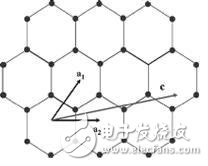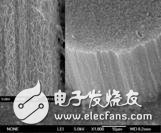Since the discovery of carbon nanotubes by Professor Iijima in Japan in 1991, nanotechnology has attracted the interest and research of a large number of scientists, and is currently a research hotspot in the scientific community. Based on the unique electrical properties of carbon nanotubes, the idea of ​​constructing novel antennas and transmission lines using carbon nanotube arrays is proposed. Since then, relevant foreign institutions have also carried out research on the interaction of carbon nanotubes and electromagnetic waves. The use of carbon nanotubes to construct new electromagnetic wave transmission media and the development of new antenna technology have become a hot topic in the field of microwave research.
Due to the ballistic transport effect and the quasi-one-dimensional quantum wire characteristics, carbon nanotubes have lower ohmic loss and weaker skin effect than traditional metal tubes, and have the possibility of constructing new antennas. Therefore, nano-antennas at home and abroad A lot of research has been done. The properties of a single nanotube as a dipole antenna are studied. The theoretical calculations show that the wavelength of the electromagnetic wave on the nanotube is about 1/50 of the wavelength in free space, which has the possibility of resonance in the lower frequency band. However, due to the high input impedance of a single carbon nanotube antenna, the antenna efficiency is too low, and there is no practical application. Therefore, it is more practical to construct a microwave device using a carbon nanotube array. The carbon nanotube beam fed by midpoint is proposed as the antenna array and simulated by CST. The results show that the antenna efficiency of the nanotube bundle is 30-40dB higher than that of the single nanotube. The nanotube bundle is used as the conductivity and the number of nanotubes. The proportional single antenna is not accurate enough in theory, and in view of the size of the nanotube bundle, it is difficult to implement the nanotube bundle by means of the midpoint feed, so the coupled feed mode is a better choice. The circular and rectangular arrays were composed of carbon nanotube bundles and simulated. The effects of various size parameters of the nanotube array on the radiation were discussed. However, the quantum effect of the nanotubes was not considered and the related experiments were lacking. In this paper, a new research method of carbon nanotube antenna array is proposed. The traditional microstrip antenna and printed Yagi antenna are used to load the carbon nanotube bundles respectively. The nanotube array is spatially fed and tested experimentally. The test results show that the loading The radiation performance of the microstrip antenna after the carbon nanotube array has changed significantly.
2 carbon nanotube material 2.1 single-walled carbon nanotubesSingle-walled carbon nanotubes are single-layered cylindrical molecules composed of only carbon atoms. In the model, they can be regarded as hollow tubes with a radius of nanometer scale formed by layered graphite sheets. Figure 1 illustrates how a graphite sheet is crimped into carbon nanotubes in the three directions indicated.

Figure 1 Schematic diagram of carbon nanotube crimping
It should be noted that these three crimping methods can form different types of carbon nanotubes, and their electrical properties are also metallic or semiconducting, which is a very important property of single-walled carbon nanotubes.
2.2 Multi-walled carbon nanotubes
The multi-walled carbon nanotubes can be regarded as a sleeve structure in which a graphite sheet of a multi-layered sheet structure is crimped, and the diameter is generally 15 to 50 nm. The experimental results show that the single-walled multi-walled carbon nanotubes have a conductivity of about 1000-2000 s/cm and have good electrical conductivity.
2.3 Preparation of carbon nanotubes
At present, there are mainly three methods for preparing carbon nanotubes, namely, arc discharge method, laser high temperature cauterization method and chemical vapor deposition method. The experimental sample used in this paper is a multi-walled carbon nanotube array prepared by chemical vapor deposition as shown in Fig. 2.

Figure 2 Scanning electron micrograph of experimental sample
Nanning Ousibang Information Technology Co., Ltd. , https://www.ousibangvape.com
